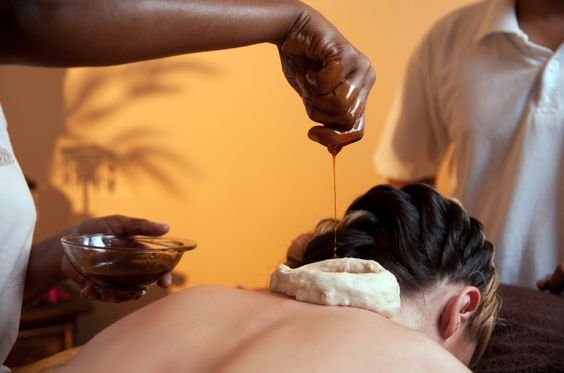Cervical pain, commonly referred to as neck pain, is a prevalent issue affecting many individuals due to various factors such as poor posture, stress, and lifestyle habits. Ayurveda, an ancient system of medicine originating from India, offers a holistic approach to managing and alleviating cervical pain. This traditional healing system, known as doshas, emphasizes the balance of the body’s energies and uses natural remedies and therapies to restore harmony and promote overall well-being.

Understanding Cervical Pain in Ayurveda
In Ayurveda, cervical pain is often linked to imbalances in the Vata dosha, which governs movement and stability in the body. The Vata dosha, when aggravated, can lead to stiffness, dryness, and discomfort in the neck region. Additionally, an imbalance in the Pitta dosha, responsible for heat and inflammation, and the Kapha dosha, which controls structure and lubrication, can also contribute to cervical pain. Ayurveda views these imbalances as the root cause of pain and discomfort, and thus focuses on restoring equilibrium through various treatments.

Ayurvedic Diagnosis
Ayurvedic practitioners diagnose cervical pain through a comprehensive assessment that includes examining the patient’s medical history, lifestyle, and symptoms. They may use methods such as pulse diagnosis, tongue examination, and visual inspection to determine the specific dosha imbalance. This diagnosis helps in tailoring a personalized treatment plan to address the root cause of the pain.
Ayurvedic Treatments for Cervical Pain
- Herbal RemediesAyurveda utilizes a range of herbs known for their anti-inflammatory, analgesic, and muscle-relaxant properties to alleviate cervical pain. Some commonly used herbs include:
- Turmeric (Curcuma longa): Contains curcumin, which has strong anti-inflammatory and pain-relieving properties. It can be consumed as a supplement or applied topically in the form of a paste.
- Ginger (Zingiber officinale): Known for its warming properties, ginger helps reduce inflammation and improve blood circulation. It can be added to the diet or used in herbal preparations.
- Ashwagandha (Withania somnifera): An adaptogen that helps manage stress and support muscle relaxation, aiding in the reduction of pain.
- Panchakarma TherapyPanchakarma is a series of detoxifying treatments designed to eliminate toxins and restore dosha balance. For cervical pain, the following therapies may be recommended:
- Abhyanga (Oil Massage): A therapeutic oil massage using medicated oils helps to lubricate and nourish the muscles and joints, alleviating stiffness and discomfort in the neck area.
- Kati Basti: This localized treatment involves creating a reservoir of warm herbal oil around the lower back and cervical region to soothe and relax the muscles and joints.
- Shirodhara: A therapy involving a continuous stream of warm herbal oil poured over the forehead, which helps to calm the mind, reduce stress, and relieve tension in the neck area.
- Diet and Lifestyle RecommendationsAyurveda emphasizes the importance of a balanced diet and lifestyle in managing cervical pain. Key recommendations include:
- Diet: Incorporate anti-inflammatory foods such as fresh fruits, vegetables, and whole grains. Avoid excessive consumption of spicy, oily, and processed foods that can aggravate inflammation.
- Hydration: Drink plenty of water to keep the body hydrated and support overall joint and muscle health.
- Exercise: Gentle yoga and stretching exercises can improve flexibility and strength in the neck and shoulders, reducing pain and preventing future issues.
- Yoga and MeditationAyurveda integrates yoga and meditation into its treatment protocols to promote overall wellness and manage cervical pain. Specific yoga postures and stretches can help improve flexibility, relieve muscle tension, and strengthen the neck and shoulder muscles. Meditation and breathing exercises assist in managing stress, which can exacerbate cervical pain.

